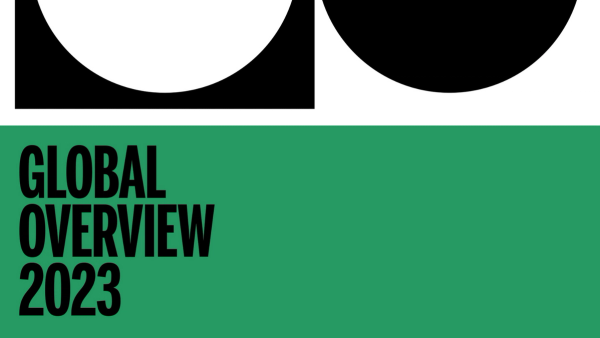L’état général de la réduction des risques dans le monde : mise à jour de 2023 des données essentielles
8 novembre 2023
Harm Reduction International (HRI)
Harm Reduction International présente une mise à jour des données essentielles de son rapport phare – L’état général de la réduction des risques dans le monde, y compris le lancement d'une nouvelle salle de consommation à moindres risques en Colombie. Pour en savoir plus, en anglais, veuillez lire les informations ci-dessous.
This page presents an update to key data in HRI's flagship report, The Global State of Harm Reduction. The full report is published every two years, with updates to key data in between editions of the report. This update summarises some of the key developments in harm reduction and drug policy since the launch of the 8th edition in November 2022.
Highlights
- The total number of countries that include explicit supportive reference to harm reduction in national policy documents has increased by four, from 105 to 109. New countries are Cambodia, Malawi, St. Kitts and Nevis, and Togo.
- For the first time in 2023, Egypt has commenced implementation of opioid agonist therapy (OAT) programmes taking the global tally to 88 countries.
- One country (Ukraine) began implementing needle and syringe programmes (NSP) in prison. A second country (France) resumed its prison NSP programme, while Armenia suspended its prison NSP programme, bringing the total number of countries implementing prison NSP in 2023 to 10.
- Colombia launched a new drug consumption room (DCR) in Bogota bringing the global tally of DCRs to 17.
- Two new countries, Colombia and Moldova, began peer distribution of naloxone.
- There were no reports of countries ceasing implementation of needle and syringe programmes (NSP), opioid agonist therapy (OAT), drug consumption rooms (DCRs), take-home and peer distribution of naloxone, or safer smoking kits distribution.
- In Canada, the United Kingdom and the United States, sharp increases in overdose deaths have been reported in recent years (a trend which has continued in 2023) with the rise in mortality rates due to the toxic drug supply (contaminated drugs, prescription opioids, heroin and fentanyl).
